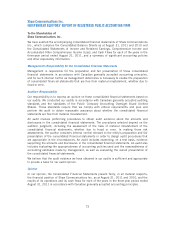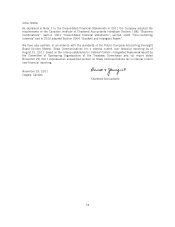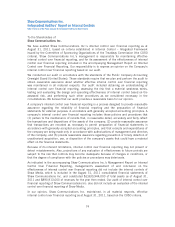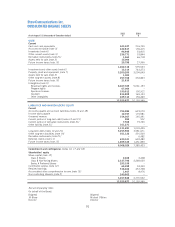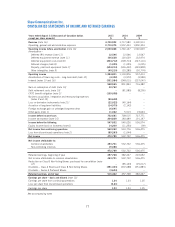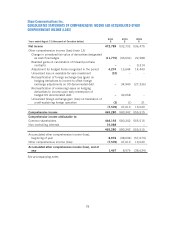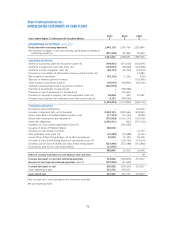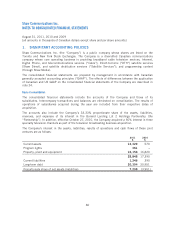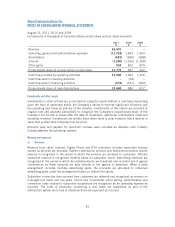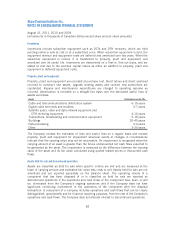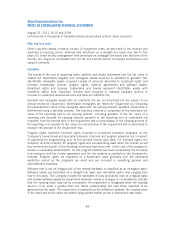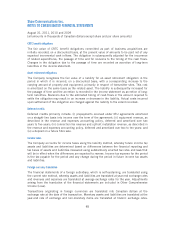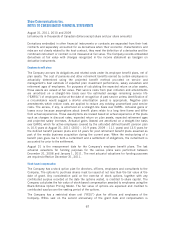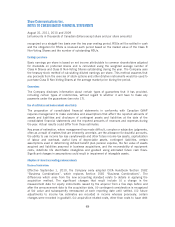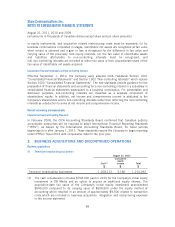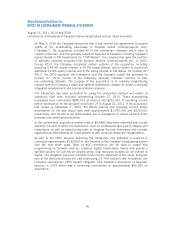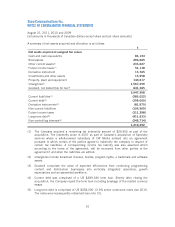Shaw 2011 Annual Report Download - page 86
Download and view the complete annual report
Please find page 86 of the 2011 Shaw annual report below. You can navigate through the pages in the report by either clicking on the pages listed below, or by using the keyword search tool below to find specific information within the annual report.Shaw Communications Inc.
NOTES TO CONSOLIDATED FINANCIAL STATEMENTS
August 31, 2011, 2010 and 2009
[all amounts in thousands of Canadian dollars except share and per share amounts]
Installation revenue received on contracts with commercial business customers is deferred and
recognized as revenue on a straight-line basis over the related service contract, which generally
span two to ten years. Direct and incremental costs associated with the service contract, in an
amount not exceeding the upfront installation revenue, are deferred and recognized as an
operating expense on a straight-line basis over the same period.
(ii) Deferred equipment revenue and deferred equipment costs
Revenue from sales of DTH equipment and digital cable terminals (“DCTs”) is deferred and
recognized on a straight-line basis over two years commencing when subscriber service is
activated. The total cost of the equipment, including installation, represents an inventoriable
cost which is deferred and recognized on a straight-line basis over the same period. The DCT
and DTH equipment is generally sold to customers at cost or a subsidized price in order to
expand the Company’s customer base.
Revenue from sales of satellite tracking hardware and costs of goods sold are deferred and
recognized on a straight-line basis over the related service contract for monthly service charges
for air time, which is generally five years. The amortization of the revenue and cost of sale of
satellite service equipment commences when goods are shipped.
Recognition of deferred equipment revenue and deferred equipment costs is recorded as
deferred equipment revenue amortization and deferred equipment costs amortization,
respectively.
(iii) Deferred IRU revenue
Prepayments received under indefeasible right to use (“IRU”) agreements are amortized on a
straight-line basis into income over the term of the agreement and are recognized in the
Consolidated Statements of Income and Retained Earnings as deferred IRU revenue
amortization.
Cash and cash equivalents
Cash and cash equivalents include money market instruments that are purchased three months
or less from maturity, and are presented net of outstanding cheques. When the amount of
outstanding cheques and the amount drawn under the Company’s operating facility (see note
10) are greater than the amount of cash and cash equivalents, the net amount is presented as
bank indebtedness.
Allowance for doubtful accounts
The Company maintains an allowance for doubtful accounts for the estimated losses resulting
from the inability of its customers to make required payments. In determining the allowance,
the Company considers factors such as the number of days the account is past due, whether or
not the customer continues to receive service, the Company’s past collection history and
changes in business circumstances.
82


